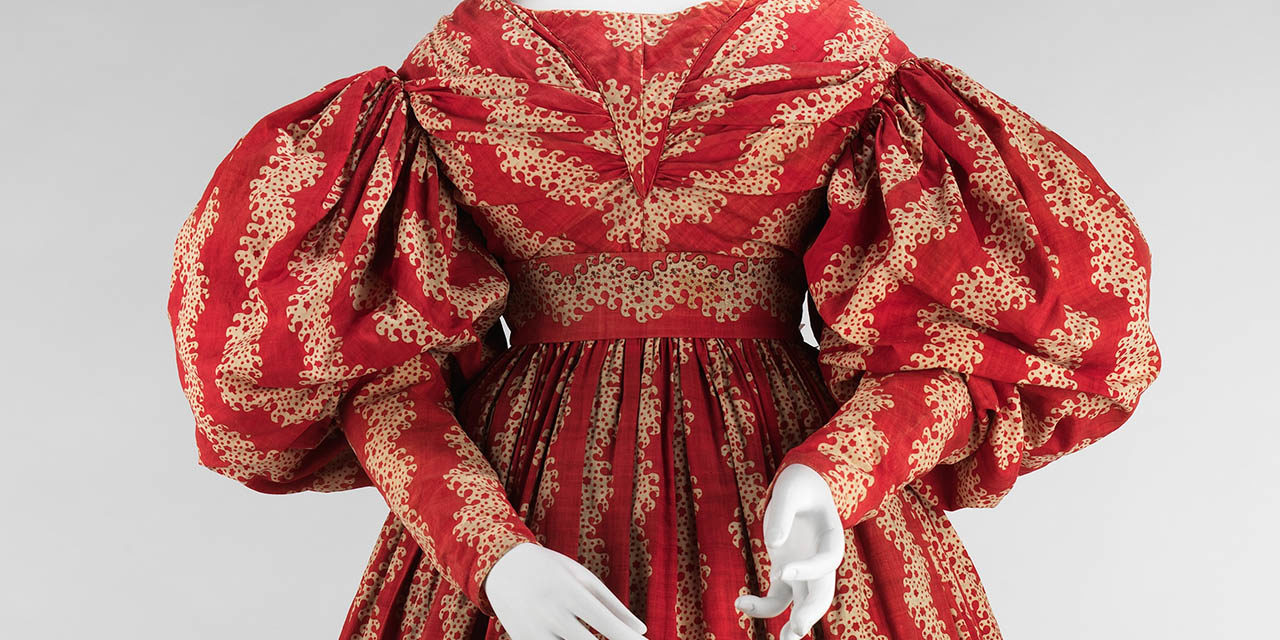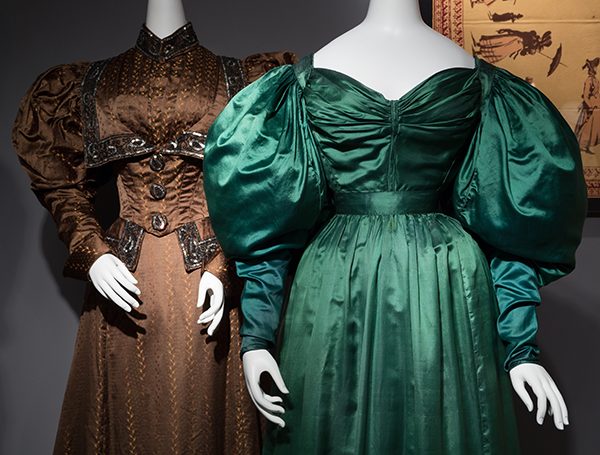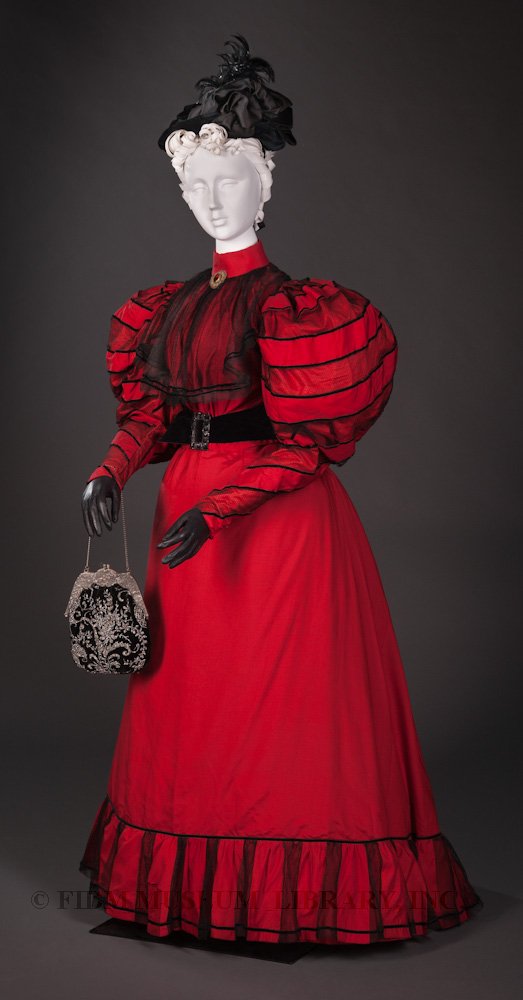A sleeve that was full at the shoulder and became tightly fitted to the wrist. Also called leg-of-mutton sleeve.
The Details
Valerie Cumming, C.W. Cunnington, and P.E. Cunnington briefly describe in The Dictionary of Fashion History (2017) the gigot sleeve and how it evolved over the years:
“Period: 1824-1836, 1862 and 1890-96; ca. 1960-80. A day sleeve, very full at the shoulder, diminishing in size towards the elbow and gradually becoming tight at the wrist.
In 1827 the upper portion was sometimes distended with whalebone hoops. In 1862 used only for summer dresses. In 1895 the gigot was ‘monstrous’, requiring 2½ yards of material. It collapsed abruptly in 1896 but was revived in the 1960s and 1970s.” (92)
An 1830s day dress in the Met’s collection (Fig. 1) shows how the gigot sleeve was balanced by a tightly cinched waist and full bell shape skirt.
A History of Costume (1965), edited by Blanche Payne, describes the gigot sleeve writing:
“Sleeves called gigots were very full to the elbow and smoothly fitted from there to the wrist.” (494)
Sara and Tom Pendergast in their Fashion, Costume, and Culture: Clothing, Headwear, Body Decorations, and Footwear Through the Ages (2003) describe the gigot sleeve and give the background story of how the name and silhouette of the sleeve came to be:
“Gigot is the French word for the back leg of an animal, especially of a lamb or sheep. The gigot sleeve, also called the leg-of-mutton sleeve, was named for its resemblance to a sheep’s hind leg: wide at the top and narrow at its bottom.” (625)
An exhibition at the Museum at FIT looked at the gigot sleeve and its revivals (Fig. 2); the curators commented:
“Leg-of-mutton, or gigot, sleeves are one of the most distinctive elements of 1830s fashion. They returned to prominence during the 1890s, growing to their fullest proportions around the middle of the decade.”
A bright red example of the gigot’s return in the 1890s features in FIDM’s collection (Fig. 3)
For more examples, see the definition for leg-of-mutton sleeve.
Fig. 1 - Designer unknown. Dress, 1832–35. Cotton. New York: The Metropolitan Museum of Art, 2009.300.948a–e. Brooklyn Museum Costume Collection at The Metropolitan Museum of Art, Gift of the Brooklyn Museum, 2009; H. Randolph Lever Fund, 1971. Source: The Met
Fig. 2 - Designer unknown (British). Afternoon dress, ca. 1830. Green silk satin. New York: Museum at FIT, P88.28.1. Museum purchase. Source: Museum at FIT
Fig. 3 - Designer unknown. Woman's Ensemble, 1894-96. Silk. Los Angeles: Fashion Institute of Design and Merchandising Museum, S2006.870.22AB. Source: FIDM Museum
Its Afterlife
The “gigot sleeve” is a very iconic modern sleeve style. While this style of sleeve was slightly adapted for more modern times, there is no doubt that big sleeves were popular during the 1980s. A red satin suit by Caché from ca. 1986-88 (Fig. 4) has classic gigot styling in the sleeves.
Fig. 4 - Designer unknown (American). Red satin suit by Caché, ca. 1986-88. Satin. Cambridge, Ontario: Fashion History Museum. Source: Dundas Museum
References:
- Cumming, Valerie, C. Willett Cunnington, and Phillis Cunnington. The Dictionary of Fashion History. New York: Berg, 2010. https://books.google.com/books?id=7NOj8Mc7GowC
- “RetroSpective – Gigot Sleeve.” Museum at FIT. Accessed August 7, 2019. http://sites.fitnyc.edu/depts/museum/RetroSpective/Gigot-Sleeve-1.html.
- Payne, Blanche. History of Costume: From the Ancient Egyptians to the Twentieth Century. New York: Harper & Row, 1965. http://www.worldcat.org/oclc/777277049.
- Pendergast, Sara, Tom Pendergast, and Sarah Hermsen. Fashion, Costume, and Culture: Clothing, Headwear, Body Decorations, and Footwear through the Ages. Vol. 3. Detroit: UXL, 2003. http://www.worldcat.org/oclc/1005840681.














